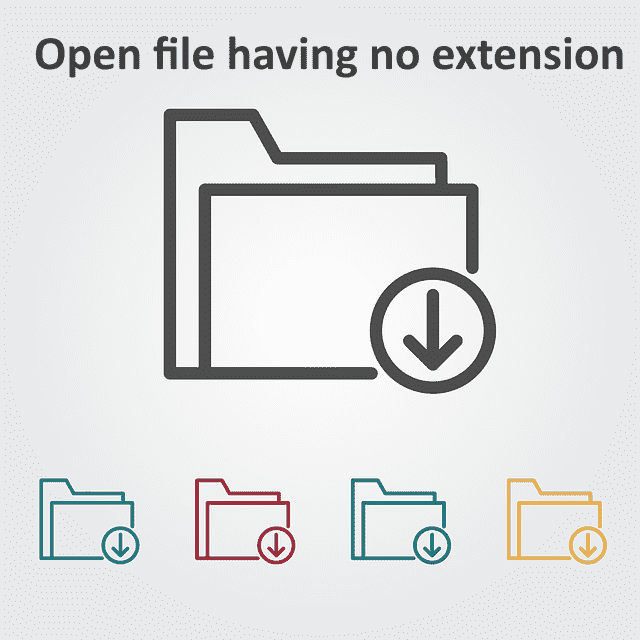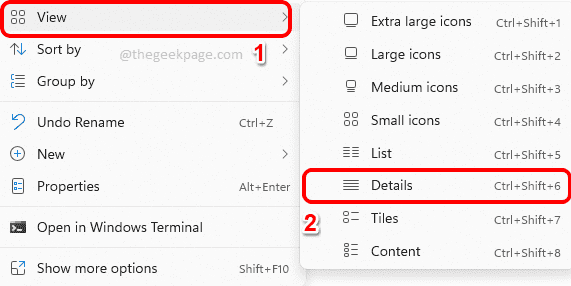Having a file doesn’t mean anything unless you know its extension. There are some files that come with no extension. Most of the time, the extension might just be hidden and you can easily find it from your Windows File Explorer itself, using the methods listed in Section 1. Even if the file has no extension in reality, it can be easily found out by following the methods listed in Section 2. And finally, when you know the extension of your file, you can find a suitable application to open your file by following the steps in Section 3.
Thus, this article is a complete solution to all your file extension problems. Hope you enjoy reading!

Section 1: How to Make Sure Whether the File Has an Extension or Not
The first very step with opening a file with no extension would be to make sure that the file really has no extension. There are 3 methods listed here, using which you can determine whether your file really has no extension or not. All of these methods involve only File Explorer and are very straightforward.
Method 1: Through Details View in File Explorer
Step 1: Head to the location where your file is at. Right click on an empty space, click on the View option and then click on the Details option.
Step 2: Now look at the Type column against your file. If the Type says File, then you can be sure that your file has no extension.
Method 2: Through File Properties
Another way to check the type of a file would be through its properties.
Step 1: Right click on the file and click on the Properties option.
Step 2: In the Properties window, click on the General tab. Now if you see File as Type of file, then you can be sure that your file indeed has no extension.
Method 3: By Enabling File Extension
This method enables you to view the extensions of all the files inside a folder if the extensions are available. So, if you can’t see the extension of a file after enabling this view, it means that the file doesn’t have an extension.
Step 1: Navigate to the location where your file is present, using Windows File Explorer.
Now click on the View tab at the top ribbon. From the dropdown menu, click on Show and then click on File name extensions.
Step 2: Now you will be able to see the extensions of all the files inside the folder. If a file doesn’t have an extension, it will not be visible.
In the example screenshot below, all the files marked in green have extensions and the one file marked in red doesn’t have an extension.
Now that you know that your file indeed has no extension available, you can go to Section 2 to find the correct extension of your file through some very simple methods.
Or if you know the extension, you can jump to Section 3 to find a suitable application to open your file.
Section 2: How to Find the Extension of a File that Has No Extension
If you couldn’t find the extension of the file by following Section 1, then we have some other methods using which you can definitely find the extension of your file.
Method 1: Through Toolsley Tool
Toolsley is an online tool that gives you the extension of your file immediately upon uploading the file.
Step 1: Head to the Toolsley website first.
Click on the Select a file button.
Step 2: Now from the Open file window, choose the file that you have to find the extension for and then click on the Open button.
Step 3: Now the Toolsley tool would give you the extension of the file as shown below.
Method 2: Through DROID Tool
This method involves the downloading of a tool named DROID into your machine. Since this tool is provided by the UK government, it is safer and more trustworthy. Another great advantage of this tool is that you can find extensions of multiple files in one go.
Step 1: Firstly, download the open-source tool from UK Government’s National Archives Website. You can always get the latest version from Download DROID: file format identification tool under the section Current version.
Once you have downloaded the zip file, right click on the zip file and then choose the Extract All option.
Step 2: Now inside the extracted folder, double click on the file droid.bat.
Step 3: On the DROID software window, click on the Add button at the top.
When the Select resources window opens up, select all the file(s) that you want to find the extension(s) for and then click on the OK button.
Step 4: Once all the files are selected, click on the Start button as shown in the screenshot below.
Step 5: Once the processing is done, you will be able to see the extension(s) of the file(s) under the column named Format.
Method 3: Through HEX Editors
If you do not want to upload the file anywhere or download an external software to find the extension of a file, you can use any hex editor that is available in your system to find the extension of a file.
If you do not have a hex editor available on your machine already, you can download Hex Editor Neo. The steps would be the same for any hex editor though.
Step 1: Once the hex editor opens up, load the file onto it.
For Hex Editor Neo, this can be done by clicking on the File tab, then on Open and then on Open File. Now browse and select the file that you want to find the extension for.
Step 2: Once the file opens up, on the right side, you can find the extension as shown in the screenshot below.
Note: If you cannot find the extension at the top of the file as shown below, you can scroll down and look for the extension.
Once you know the extension, you can go to Section 3 to find a suitable program that can open the file for you.
Section 3: How to Get the Right Software to Open the File If You Know the Extension
This section assumes that you know the extension of your file, but you need to know using which software you can open it.
Step 1: Click here to go to the FileInfo.com website.
In the search bar, type in the extension name and hit the Search icon.
In the example below, I’m trying to find which all programs can open the extension XML.
Step 2: Now if you scroll down, under the section Programs that open XML files, you can see all the programs that can open the XML extension files.
You can now get one of these softwares and install it on your machine to open your file.
Just like how you found the suitable programs to open an xml file, applications to open any file extension can be found this way.
That’s it. Hope you found the article useful. Thank you for reading.


